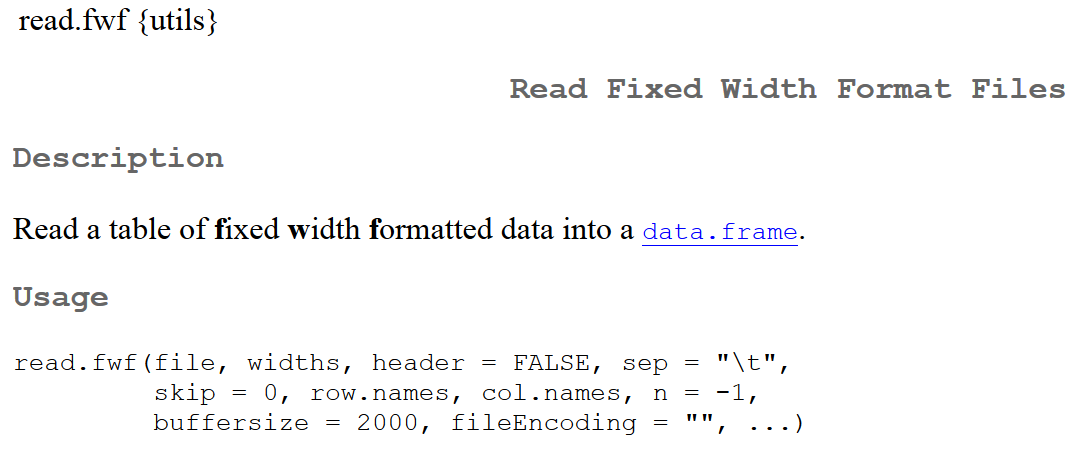The R code is shown here:
> path<-"http://archive.ics.uci.edu/ml/machine-learning-databases/"
> dataSet<-"iris/bezdekIris.data"
> a<-paste(path,dataSet,sep='')
> x<-read.csv(a,header=F)
> colnames(x)<-c("sepalLength","sepalWidth","petalLength","petalWidth","Class")
The dim(), head(), and tail() functions can be used to look at the size and the first and last several observations of the dataset, shown here:
> dim(x)
[1] 150 5
> head(x,2)
sepalLength sepalWidth petalLength petalWidth Class
1 5.1 3.5 1.4 0.2 Iris-setosa
2 4.9 3.0 1.4 0.2 Iris-setosa
> tail(x,2)
sepalLength sepalWidth petalLength petalWidth Class
149 6.2 3.4 5.4 2.3 Iris-virginica
150 5.9 3.0 5.1 1.8 Iris-virginica
Alternatively, we can use other R functions to input data from an external data file. Those functions include the read.table(), read.delim(), and read.fwf() functions. To find out all functions starting with read., we could apply the apropos() function, shown here:
> apropos("read.")
[1] ".read.xls" ".readRDS" "read.csv"
[4] "read.csv2" "read.dcf" "read.delim"
[7] "read.delim2" "read.DIF" "read.fortran"
[10] "read.ftable" "read.fwf" "read.lines"
[13] "read.links" "read.lynx" "read.socket"
[16] "read.table" "read.w3m" "read.xls"
[19] "readBin" "readChar" "readCitationFile"
[22] "readClipboard" "readline" "readLines"
[25] "readRDS" "readRegistry" "readRenviron"
[28] "readSeries" "spreads" "spreadSeries"
[31] "Sys.readlink"
To find out the exact usage of individual functions, we use the help() function. For example, after issuing help (read.fwf), we can find information about this specific function, shown in the screenshot in the first several lines:
